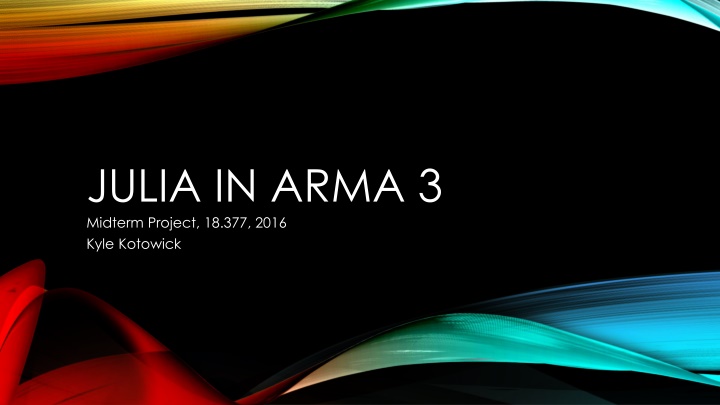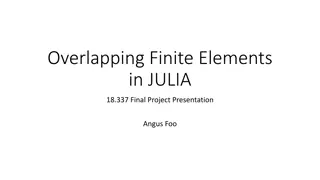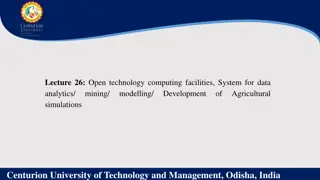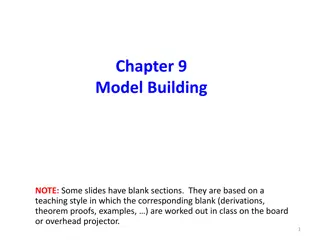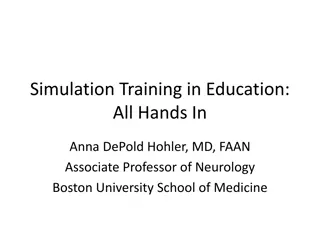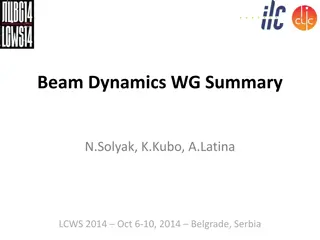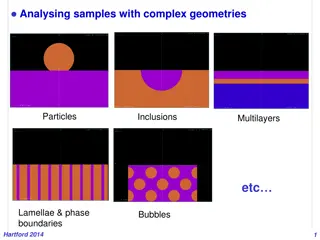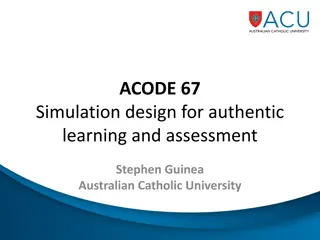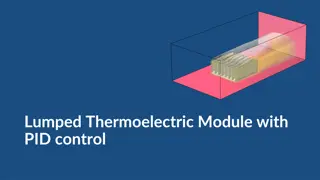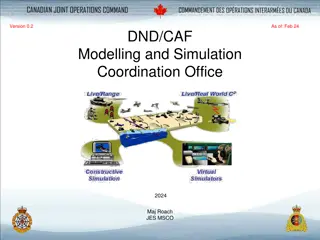The Potential of Integrating Julia with ARMA 3 for Enhanced Simulation Capabilities
Background: ARMA 3 is a military simulation video game known for its extensive modification capabilities. However, its scripting language SQF is slow for certain tasks, impacting performance. Julia, a high-performance language, can be embedded in C/C++ to overcome SQF limitations, enabling faster and more efficient calculations in ARMA 3 simulations.
Download Presentation

Please find below an Image/Link to download the presentation.
The content on the website is provided AS IS for your information and personal use only. It may not be sold, licensed, or shared on other websites without obtaining consent from the author.If you encounter any issues during the download, it is possible that the publisher has removed the file from their server.
You are allowed to download the files provided on this website for personal or commercial use, subject to the condition that they are used lawfully. All files are the property of their respective owners.
The content on the website is provided AS IS for your information and personal use only. It may not be sold, licensed, or shared on other websites without obtaining consent from the author.
E N D
Presentation Transcript
JULIA IN ARMA 3 Midterm Project, 18.377, 2016 Kyle Kotowick
BACKGROUND ARMA 3 is a military simulation video game developed by Bohemia Interactive Studios Includes a proprietary scripting language ( SQF ) to control units/objects Allows for extensive modification and programmatic control Often used for human-participant experiment simulations Can collect extensive amount of data from user actions Can precisely control experimental parameters and scenario Can integrate various algorithms to test them No graphics/game-design knowledge required
MOTIVATION While powerful in what it is able to do in-game, SQF is SLOW Generate array of 1,000,000 random floats between 0 and 1: Julia: 28ms SQF: 1359ms SQF is SLOPPY Generate array of 1,000,000 random floats between 0 and 1: Julia: vals = rand(1000000) SQF: _vals = []; for "_i" from 0 to 999999 do { _vals pushBack (random 1); };
MOTIVATION Some applications use a lot of math Orientation conversions (unusual ARMA 3 format to DCM/quaternion/Euler) Distance/angle calculations between objects/players Custom A.I. Testing of various other algorithms (path planning, scheduling, etc.) Large detrimental impact on performance if this is done in SQF Some applications require such calculations on every frame Next frame will not be drawn until script for last frame is complete
SOLUTION Julia can be embedded in a C/C++ program ARMA 3 can call a C++ program from within SQF Let s chain them together!
COMPLICATIONS ARMA 3 can only pass one argument (a string) when it calls the C++ function All numerical arguments must be formatted into a string, then parsed by the C++ function The C++ function can only return a single string back to ARMA The length of this return string is limited based on platform type Needs a system where repeated calls returns successive parts of the result string Julia s embedding limitations Can only initialize Julia in one C++ thread addprocs command opens a new terminal for each added proc Documentation for embedding Julia is atrocious Integration issues: ARMA 3 is 32-bit, most Julia installs are 64-bit Dynamic/static library conversion
EXAMPLE: RANDOM NUMBERS Generate an array of random floats Small input, large output
EXAMPLE: MATRIX MULTIPLICATION Multiply two square matrices of equal size Medium input, medium output
EXAMPLE: MATRIX INVERSE Find the inverse of a square matrix Medium input, medium output NOTE: logarithmic scale
CONCLUSION It works!! Strings-only restriction really slows it down Worthwhile when input/output string is short, but operation is complex Does not significantly improve any existing functions we use, but is a good tool for potential future use
